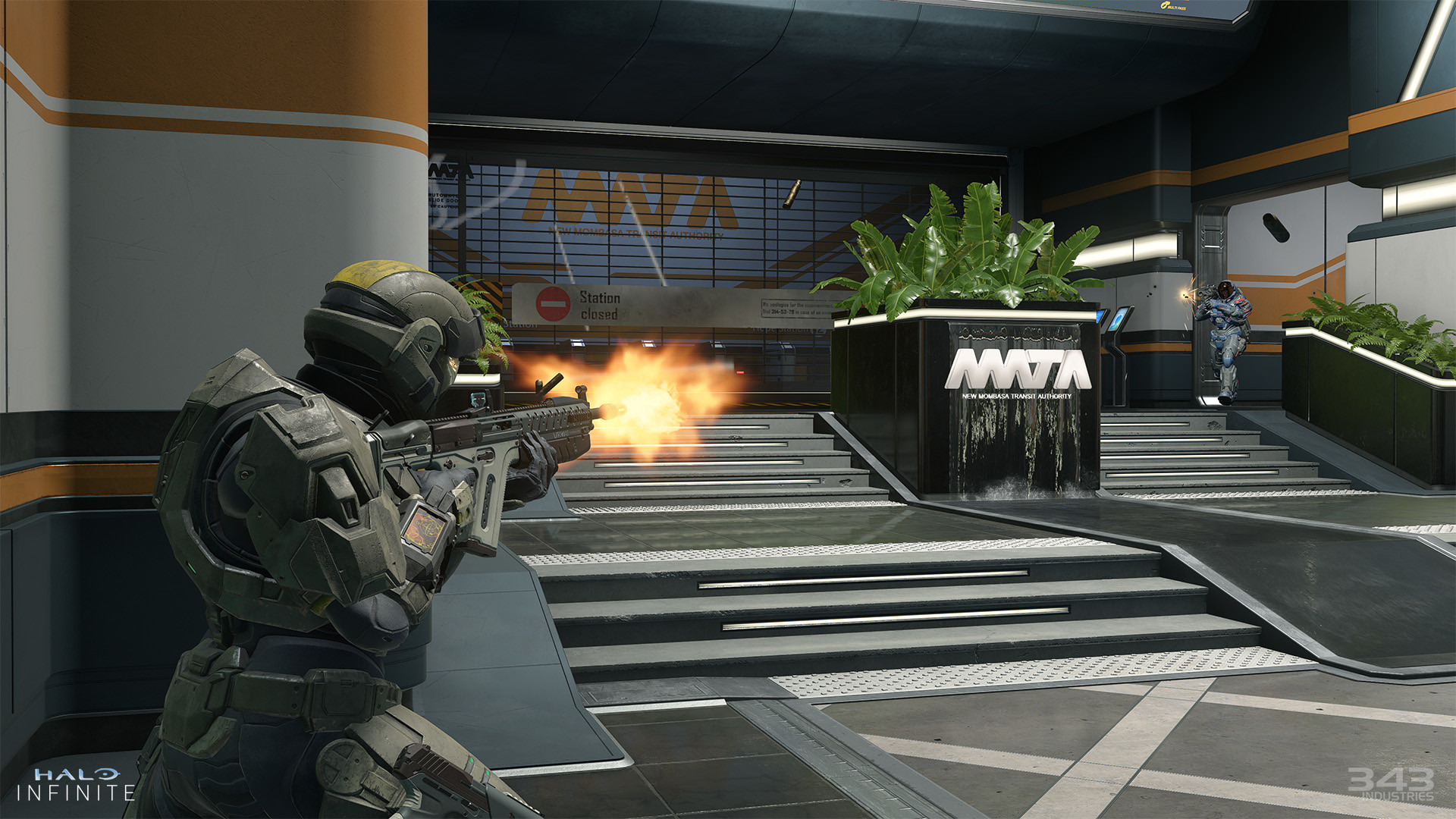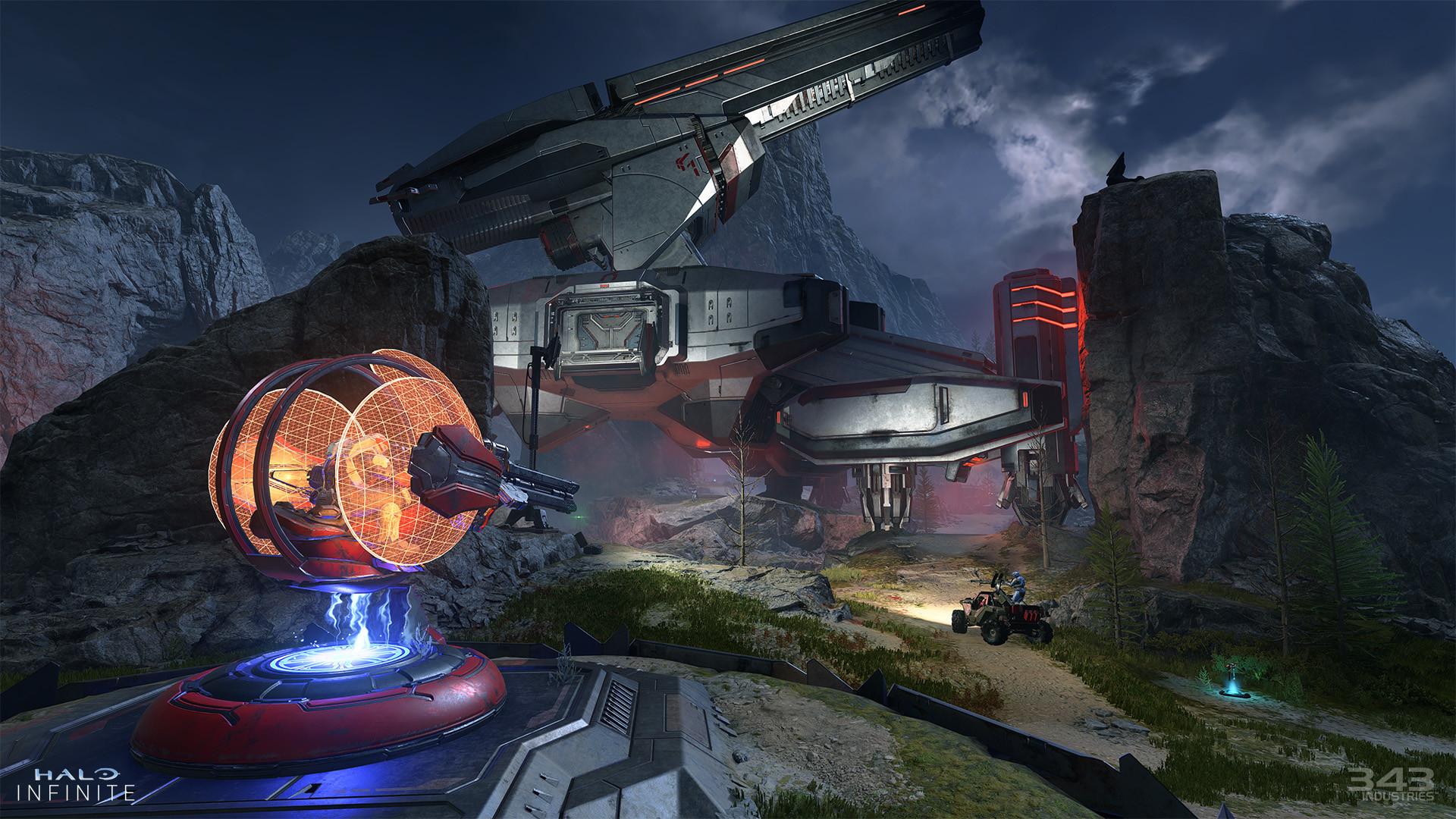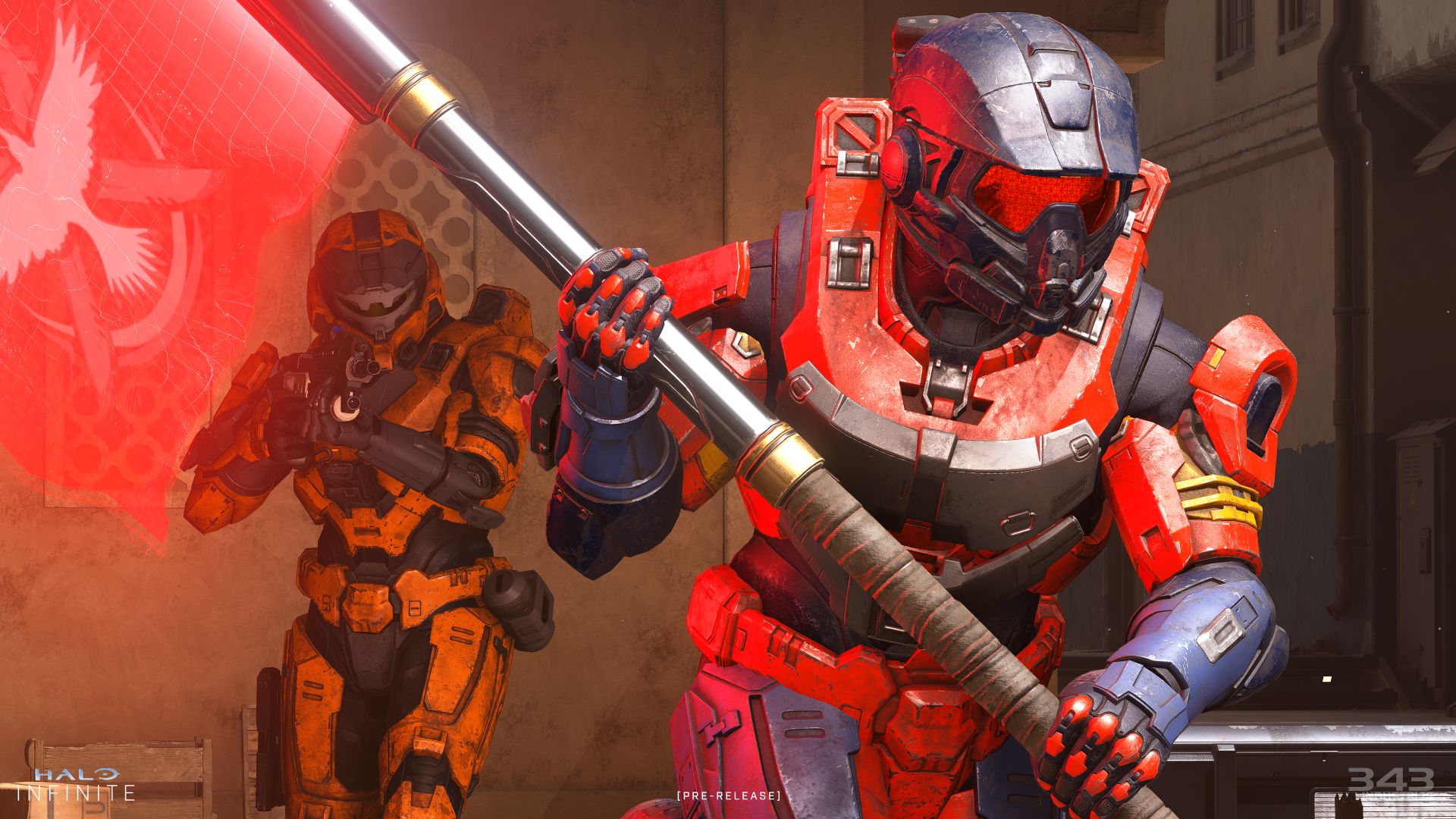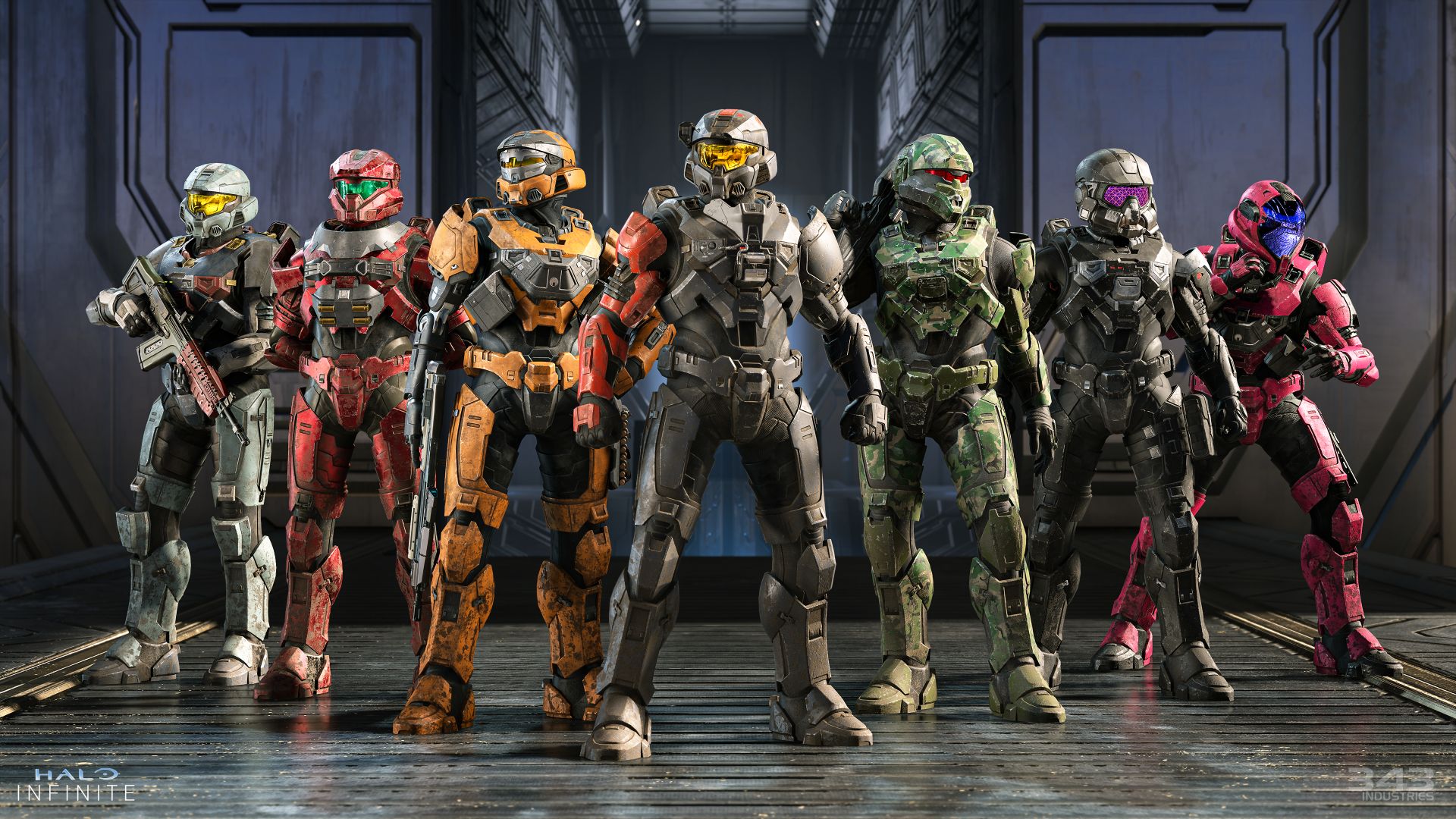
NOTE: This review-in-progress focuses on our impressions of Halo Infinite’s free-to-play multiplayer component. You can read our thoughts on the game’s single player campaign in our full Halo Infinite review.
Halo’s transition from Bungie to 343 Industries has been rough, and though the latter has been in charge of the franchise for a decade at this point, it doesn’t feel like it’s been able to fully stamp its name on the series’ identity and its legacy. With Halo Infinite, 343 Industries is looking to finally change that and deliver what it’s calling the ultimate Halo experience. It remains to be seen how successful it has been with that where the game’s single player campaign is concerned, but in terms of the multiplayer, I can confidently say that, at long last, Halo is finally back where it belongs- right on top.
Halo has always had a very distinct multiplayer identity from the other big franchises that it has competed against in this space over the years. From map design and visual aesthetic to weapons, movement, and even things such as time-to-kill (TTK), Halo has always felt like a very unique multiplayer experience. Halo Infinite very much retains that identity. It feels like a Halo game through and through, feeling in many ways like a spiritual successor to Halo 3. But while its similarities to past Halo games are certainly one of its biggest strengths, Infinite also benefits from implementing new mechanics and ideas, and balancing them perfectly with what a Halo experience should be.
"It remains to be seen how successful it has been with that where the game’s single player campaign is concerned, but in terms of the multiplayer, I can confidently say that, at long last, Halo is finally back where it belongs- right on top."
Before we get to that though, let’s talk about the basics- because it’s here that Halo Infinite truly shines. Movement and gunplay feel slick and consistently enjoyable, so that even the simple act of moving around and aiming and shooting a weapon at an enemy just feels good. Sprinting, clambering up higher surfaces, and using tactical equipment (which I’ll get to in a bit) allows for a much more robust set of movement options, which is something that is baked into the way maps are designed as well. Meanwhile, knowing when to fire off the hip, when to zoom in using the left trigger, when and how to use your grenades, and again, when to use your tactical equipment is all a crucial part of the experience. All of this allows Infinite to strike a great balance between being accessible and enjoyable on a fundamental level, while also allowing more skilled and dedicated players to formulate their own on-the-fly strategies and work within the nuances of all the interacting mechanics.
It helps that there’s a solid selection of weapons on offer in the game. This is an area where Halo has always excelled, and it continues to do so in Infinite. Staples like the Assault Rifle, Battle Rifle, Plasma Pistol, Needler, and more are, of course, back, and for the most part they all feel excellent to use. Weapons provide excellent audio and visual feedback, and some, like the MK50 Sidekick pistol or the S7 Sniper, deal devastating damage that never gets old. And of course, melee weapons such as the Energy Sword and Gravity Hammer are still an absolute blast to use- I’ll never get tired of the absolute havoc they can wreak on enemies if you’re using them smartly, and I also really appreciate how they’ve been balanced to feel meaningfully different from each other, which hasn’t always been the case in past Halo games. Not all weapons are balanced as they should be though- the Bulldog shotgun looks formidable and kicks like a mule, but it can take three to four shots to kill an enemy. Meanwhile, the VK78 Commando is similar, in that it looks and sounds like a dangerous weapon, though in practice, it is far less deadly than it seems like it should be.
There are new weapons that have been thrown into the mix as well, most of which are excellent additions. There’s the Skewer, a deadly long-range weapon that launches a high-powered spike that’s capable of destroying a vehicle in and of itself, while the new electricity-based Shock weapons also throw in a new layer of tactical nuance, with Shock damage being a new element. There’s the Disruptor, which deals damage to enemies and vehicles over time, and the Shock Rifle, a long-range burst weapon that can one-shot fully shielded enemies, or even disable vehicles. Some new weapons, however, are not as fun to use. The Ravager, for instance, is an incendiary launcher that can also fire charged shots, but in practice, it’s much less effective than its description makes it sound.
"Movement and gunplay feel slick and consistently enjoyable, so that even the simple act of moving around and aiming and shooting a weapon at an enemy just feels good."
Tactical equipment is another element that strengthens the core of Halo Infinite’s gameplay. Functioning as pickups with limited uses that can be found at various points scattered throughout the maps, there are seven kinds of equipment items in Halo Infinite, and I’m surprised at how useful each of them can be in different kinds of situations. The best of the lot is obviously the grappleshot, which can be used to pull yourself across distances, but with smart usage, can also be used to grapple to and hijack enemies, or grapple to distant enemies and smack them with powerful melee attacks as you zip into them. The grappleshot has a limited range, which smartly ensures that it doesn’t become too overpowered, but if you know how to use it, it can be a deadly tool, especially if you combine it with, say, the Energy Sword.
The grappleshot is emblematic of the utility of each equipment item in Halo Infinite. The Threat Sensor, true to its name, senses enemies in a small area, allowing you to get the drop on them, but you can also attach one of these to a friend or a foe, so that the sensor is constantly moving around. The Repulsor’s primary purpose is to fire off a blast that knocks back any incoming explosives, but you can also use it to push enemies off the edges of a map and send them to their deaths. The Thruster is a quick and short-range dash that can be used to dodge attacks and gunfire, but if used correctly, you can also use it to close the gap to enemies as you move in for a deadly melee attack. Then there are Halo classics like the Overshield and Active Camo, which can be particularly handy in specific situations- the Overshield, for instance, is great for a Total Control match, where you might be trying to hold off a swarm of incoming enemies while you defend a zone, while Active Camo is massively useful in Capture the Flag games. The only equipment item in the game that I have been underwhelmed by is the Drop Shield, but though I’ve found it fairly ordinary and straightforward so far, even that has helped me out in a few sticky situations.
When it comes to weapons and equipment, Halo Infinite is starting off strong, and with some tweaks, and perhaps with the addition of more powerful weapon variants, it can continue to get even better. In terms of maps, however, I have practically nothing to complain about. Across its 4v4 Arena modes and 12v12 Big Team Battle modes, Infinite sports a solid collection of excellently designed and varied maps, each offering their own unique characteristics and defining elements. Big Team Battle maps are larger playing fields that organically blend areas with unique strengths, from sniper nests to areas that are perfect for close-quarters firefights to open spaces that encourage some classic vehicle carnage. Though there are only three BTB maps in the game right now, they’re all top tier, and are all the perfect size- not small enough to feel needlessly dense and chaotic, not large enough to feel empty and slow-paced.
"When it comes to weapons and equipment, Halo Infinite is starting off strong, and with some tweaks, and perhaps with the addition of more powerful weapon variants, it can continue to get even better. In terms of maps, however, I have practically nothing to complain about."
Something else that helps the flow of maps and matches in general is weapon spawns, power weapons, and vehicles, which, for the most part, are balanced really well. The frequency with which they spawn is neither chaotic nor unsatisfyingly stingy, though I have to say vehicles such as Scorpions, Wraiths, Banshees, and Wraiths spawning with slightly more frequency. Meanwhile, Arena maps are also perfectly built to suit the needs of matches with smaller player counts, retaining the same strengths in variety and design that encourage thrilling encounters where using your surroundings as tactical advantages becomes key. Of course, it also helps the visually, each map in the game is excellent to look at and simply move around in, from the neon-lit signs of Streets, to the night-time outdoors battles of Deadlock (which is my personal favourite), to the winding verticality of Recharge.
Similarly gratifying is Halo Infinite’s selection of modes. There’s a variety of modes available across Arena and BTB matches, while some of them even have multiple variations. Staples like Slayer and Capture the Flag are back, of course, as is Strongholds, which was first introduced in Halo 5: Guardians. For the most part, I’ve enjoyed all the different modes in the game to different degrees. Arena’s Oddball can be incredibly fun when you’re part of a team that’s working together, while Stockpile in BTB offers a nice mix of team-play and the kind of widespread carnage you’d expect in something like Slayer or Capture the Flag. Meanwhile, Total Control can be a blast as well, especially when teams rush in to capture a zone from the enemy team, or fight together tooth and nail to hold and defend a zone.
It can be frustrating when you’re teamed up with players who refuse to play the objective, because Halo is and always has been a team-based game, but of course, that’s not the game’s fault (though better progression mechanics, which I’ll get to in a bit, could be used to motivate players to play a certain way). It’s also disappointing that Halo Infinite has a very limited selection of playlists right now, which means you’re at the game’s own whims as you get thrown around randomly from mode to mode rather than being able to choose for yourself which mode you want to play- though thankfully, 343 Industries has said that it’s going to begin adding in more playlists very soon.
"Similarly gratifying is Halo Infinite’s selection of modes."
The one area of Halo Infinite that has missed the mark for the most part is the progression. Being the first ever free-to-play Halo game, Infinite adopts a battle pass, though its implementation isn’t the best. When the multiplayer beta kicked off, progression happened at a snail’s pace, owing to the fact that you don’t get XP for how you perform, but for completing arbitrary challenges. Since then, 343 Industries has made improvements that have significantly increased the amount of XP you get per match and how sped up how quickly you level up, but I still feel that having progression be challenge-based rather than performance-based is unwise. It encourages players to focus on specific actions rather than playing the objective, which is far from ideal in a team-based arena shooter like Halo. There’s also the fact that you can have the best, most high-scoring game of your life, but the game won’t recognize or reward that in terms of progression- which can feel a bit discouraging.
The rewards for progression themselves area also pretty uneven. The bulk of the rewards you get as you level up are limited to basic stuff like armour coatings or cosmetic attachments that, honestly, most people won’t even notice in the heat of the battle. It doesn’t help that some of the best cosmetic items – and there are some really, really good ones in here – can only be found in the store, which means you’re being pushed to spend real money. Meanwhile there’s plenty of tiers that reward you with things such as XP boosts, XP grants, and challenge swaps. The latter in particular stings a little- given how arbitrary and needlessly complicated some challenges can be, I would have preferred if challenge swaps were an unlimited and free resource (though I do understand that that would have given rise to some complications, seeing weekly challenges come from a limited pool).
Customization, too, has room for improvement. While Halo Infinite deserves credit for having surprisingly robust customization tools, they do have some baffling omissions- for instance, if you purchase a cosmetic armour set from the store, the game doesn’t let you mix and match its pieces with the stuff you already have. You cannot, for example, use a different nameplate or a separate armour coating with that set of cosmetics, and are forced to use every single one of its elements. That said, 343 Industries has already been very proactive when it comes to listening to and acting on player feedback, so I’m hoping that significant fixes will be coming in the future.
"Even as things stand, Halo Infinite’s multiplayer is one of the series’ best offerings to date. With time, it can become even better."
Honestly, though, I’m not too bothered about most of that stuff. The progression grind can be a bit frustrating, the rewards can be a bit unrewarding, and the customization could be better, but at the end of the day, pretty much all of that stuff is ancillary. The core of the experience is what matters the most, and here, Halo Infinite is off to a flying start. Gunplay, movement, map design, the pool of modes, the selection of weapons, and mechanics such as equipment and weapon and vehicle spawns all work together in perfect harmony, and the end result is a stellar multiplayer experience. 343 Industries has also been great about acting on player feedback in these early days, and that, combined with the excellent base the game is starting off of, makes me more than a little hopeful about what the future has in store. Even as things stand, Halo Infinite’s multiplayer is one of the series’ best offerings to date. With time, it can become even better.
This game was reviewed on the Xbox Series X.



















